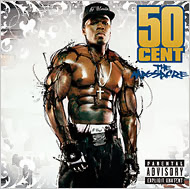This was researched by someone else in my group:
Film Noir beginning in the early 1940s was one of Hollywood's original, artistic movements. Being inspired by American crime fiction and mostly brought to the screens by European directors who shared a story telling gift. Fritz Lang, Robert Siodmak, Billy Wilder, and Otto Preminger were further creators of the film noir style.
During and immediately following World War II, movie audiences responded well to this original, creative and adult type of film. Many writers, directors, cameramen and actors were eager to create something as new and fresh as this idea. Largely fueled by the financial and artistic success of Billy Wilder’s adaptation of James M. Cain’s novella Double Indemnity (1944), people starting coming out with new crime thrillers and murder dramas to heighten intensity and darkness in the film industry.
Few, if any of the artists in Hollywood who made these films called them “noir” at the time. But the vivid co-mingling of lost innocence, doomed romanticism, hard-edged cynicism, desperate desire, and shadowy sexuality that was unleashed in those immediate post-war years proved hugely influential, both among industry peers in the original era, and to future generation of storytellers, both literary and cinematic.
To this day the debate goes on as to whether “noir” is a film genre, circumscribed by its content, or a style of storytelling, identified by its visual attributes. The debate — in which there is no right answer — is only one of the things that keeps noir fresh for successive generations of movie lovers.
Response to comments: From all of this I can understand that film noir was a budget film for post war purposes however it went down well with the majority of audiences. It is not a common film genre used these days so if we used it for our film opening people may like it because it is something new that they haven't seen for a while. It might draw in a wider audience because it is new and interesting. I think people will enjoy the fact that it is an old film technique(black and white) which is being used to create a modern film for example the film The Artist, which used the same kind of style as film noir, released in 2011 was very popular and won 5 oscars which shows that something different appeals to the audience.

